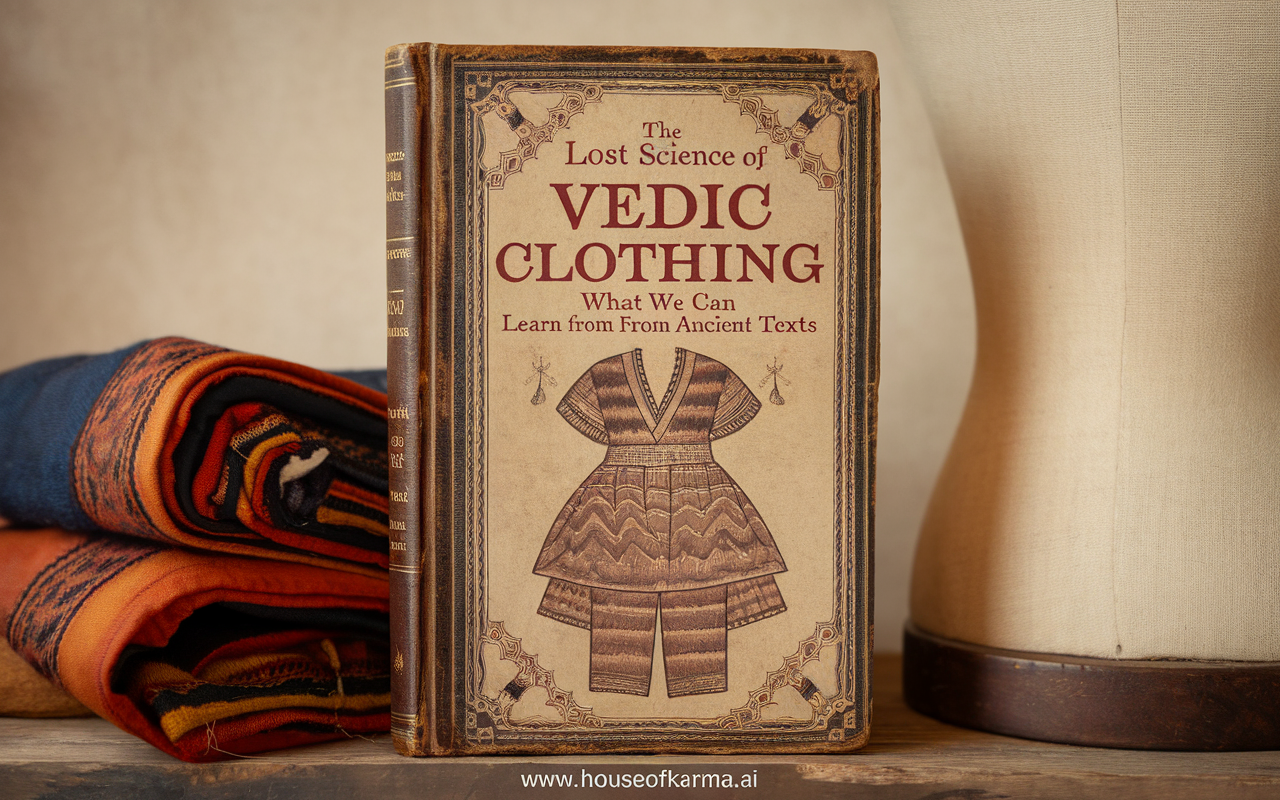The Lost Science of Vedic Clothing: What We Can Learn from Ancient Texts
Introduction
Fashion today is often seen as a trend-driven industry, but in Vedic times, clothing was far more than just a way to cover the body. Ancient Indian texts like the Vedas, Upanishads, and Puranas describe clothing as a tool for energy alignment, spiritual growth, and well-being. Vedic clothing was deeply rooted in science, blending principles of Ayurveda (holistic health), Vastu (spatial harmony), and Dharma (righteous living).
In this blog, we will uncover the lost science behind Vedic clothing and how these principles can be revived in modern life. From fabric choices to color significance, from astrological influences to the role of sacred symbols, discover how dressing with intention can transform your energy and lifestyle.
1. The Purpose of Clothing in Vedic Tradition
Unlike today’s fast fashion culture, where clothing is primarily about appearance, Vedic clothing followed a higher purpose:
Dharma (Right Living): Clothing was chosen based on a person’s duties and responsibilities.
Ayurveda (Health & Energy): Fabrics and colors were selected to balance bodily energies or doshas.
Brahmacharya (Energy Preservation): Certain garments helped retain spiritual energy during meditation.
Ritualistic & Cosmic Connection: Clothing aligned with planetary movements, lunar cycles, and sacred ceremonies.
Vedic Term: Vastra (Clothing)
The Sanskrit word Vastra doesn’t just mean fabric—it signifies a sacred covering that protects and nurtures the soul.
Example: A silk shawl (Angavastram) worn during meditation was believed to enhance energy flow and deepen focus.
2. Fabrics & Their Energy in Vedic Times
The choice of fabric in Vedic clothing wasn’t random—it was based on bioenergetic properties that influenced the body and mind.
Natural Fibers & Their Benefits
Cotton: Allowed air circulation, preventing toxins from trapping in the body.
Silk: Retained and amplified spiritual energy, often worn by sages and royalty.
Wool: Provided warmth while also acting as an insulator against negative energies.
Linen: Had antimicrobial properties and was worn in healing rituals.
Example: Monks and yogis often wore cotton or wool robes to aid their meditation practice. Silk was reserved for auspicious occasions due to its ability to retain Sattvic (pure) energy.
3. The Science of Colors in Vedic Clothing
Color wasn’t just about aesthetics—it was used for healing, energy alignment, and mood regulation.
Vedic Color Meanings:
White (Shukla): Purity and peace – worn by saints and seekers.
Red (Rakta): Strength, passion, and power – worn during weddings and celebrations.
Yellow (Pitambara): Knowledge and wisdom – the color of sages and scholars.
Blue (Neel): Depth and stability – associated with Lord Krishna.
Black (Krishna Varna): Absorbs energy, often avoided in auspicious ceremonies but used for protection from negative forces.
Example: The traditional saffron (Bhagwa) robe of monks signifies detachment from material desires and spiritual awakening.
4. Dressing According to Vedic Astrology
Vedic traditions strongly emphasized wearing clothing that aligned with planetary influences.
Planetary Influences on Clothing
Sun (Surya): Gold, orange, and red for vitality.
Moon (Chandra): White and silver for emotional balance.
Mars (Mangal): Red for courage and strength.
Mercury (Budh): Green for intelligence and creativity.
Jupiter (Guru): Yellow for wisdom and expansion.
Venus (Shukra): Soft pastel shades for harmony and luxury.
Saturn (Shani): Dark blue and black for discipline and endurance.
Example: Wearing yellow on Thursdays is considered auspicious to enhance Jupiter’s influence, promoting wisdom and prosperity.
5. Rituals and Clothing Purification
Unlike modern synthetic washing, Vedic clothing was purified using herbs and sacred mantras.
Traditional Clothing Purification Methods
Turmeric & Sandalwood: Used to purify and energize new clothes.
Mantras: Specific Vedic chants were recited to bless garments before wearing.
Sunlight Drying: Clothes were dried under the sun to absorb solar energy (Prana).
Example: Many still dip new clothes in turmeric water before wearing them, a practice derived from ancient Vedic purification methods.
6. How to Incorporate Vedic Clothing Wisdom Today
Although we live in a different era, we can still integrate these Vedic clothing principles into our lives:
✅ Choose Natural Fabrics: Avoid synthetic fibers and opt for cotton, silk, wool, or linen. ✅ Wear Colors Mindfully: Select shades based on their energy and the planetary influences of the day. ✅ Respect Clothing Purification: Wash clothes with natural detergents and dry them in sunlight. ✅ Dress for Rituals & Intentions: Wear specific garments for meditation, work, or spiritual activities. ✅ Understand Symbolism: Choose patterns and designs that carry positive energy.
Example: Incorporating saffron, gold, or white in your daily wear can bring warmth, prosperity, and peace into your life.
Conclusion
Vedic clothing is more than an aesthetic choice—it’s a science of energy, well-being, and spiritual alignment. By understanding the deeper meaning behind fabrics, colors, and rituals, we can make conscious choices that enhance our daily lives.
If you’re looking for authentic Vedic-inspired clothing and lifestyle products, visit www.houseofkarma.ai and explore a collection that aligns tradition with modern elegance.
Wear your energy. Live your karma.


